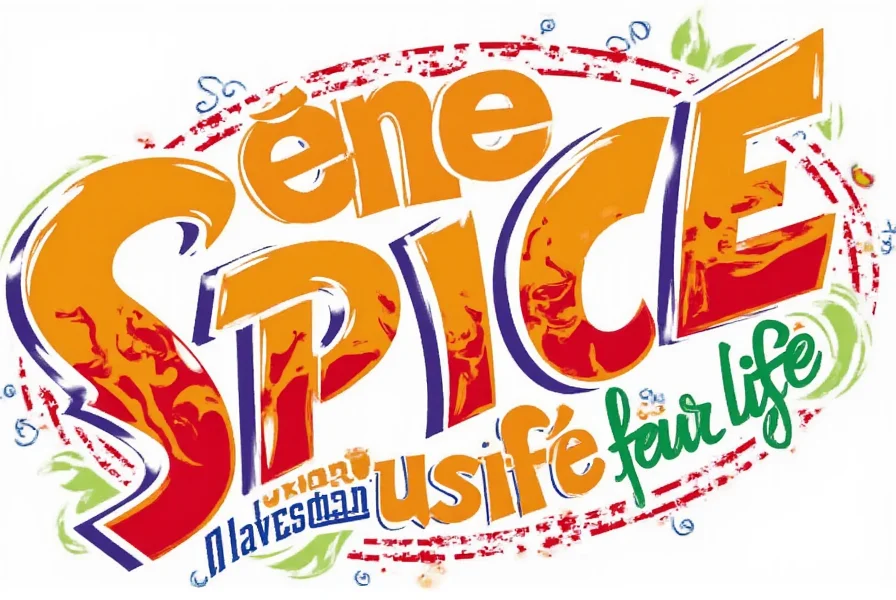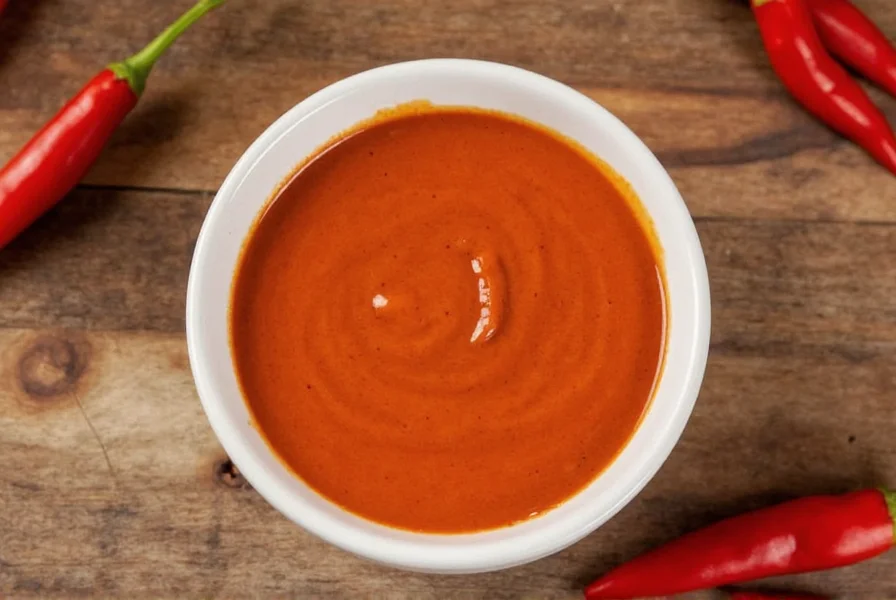Yes, chipotle sauce is hot, with a Scoville Heat Unit (SHU) range of 2,500 to 8,000, placing it in the moderate heat category. However, its distinctive smoky flavor often masks the spice, making it more approachable than purely hot sauces. This guide explains exactly how hot chipotle sauce is, how it compares to other peppers and sauces, and practical tips for using it in your cooking.
| Pepper Type | Scoville Heat Units (SHU) | Heat Level Description |
|---|---|---|
| Mild Jalapeño | 2,500 | Noticeable heat, tolerable for most |
| Average Jalapeño | 5,000 | Moderate burn, common in Mexican dishes |
| Spicy Jalapeño / Chipotle | 8,000 | Firm kick, best for spice lovers |
| Habanero | 100,000 - 350,000 | Very hot, not for beginners |
What Exactly Is Chipotle Sauce?
The term 'chipotle' might sound like some fancy new spice trend, but it actually comes from Nahuatl (the language of the Aztecs) and means 'smoked jalapeño.' Yes, chipotle peppers are simply jalapeños that have been dried and smoked. These little flavor bombs form the base of chipotle sauce, which is often blended with ingredients like garlic, vinegar, adobo sauce, tomatoes, or citrus to create a complex, fiery condiment.

There are different forms of chipotle-based products:
- Chipotle in Adobo: Whole or chopped chipotles preserved in a tangy, smoky tomato-based sauce.
- Chipotle Puree: A smooth paste made from pureed chipotles, often used in sauces or marinades.
- Chipotle Powder: Ground dried chipotle peppers, great for dry rubs or seasoning.
- Chipotle Sauce: Ready-to-use sauce with varying levels of heat and flavor complexity.
How Hot Is It Really? (The Scoville Scale Breakdown)
Let’s get down to business: how hot is chipotle sauce?
To measure spiciness, we use the Scoville scale, which quantifies the amount of capsaicin (the compound responsible for heat) in a pepper. Jalapeños range from about 2,500 to 8,000 Scoville Heat Units (SHU), while chipotle peppers — being smoked and dried jalapeños — retain that same heat level.
Flavor Profile: More Than Just Heat
One of the biggest reasons chipotle sauce is so beloved isn't just because of the heat — it's the rich, deep flavor profile. Think of it as the difference between a one-note firecracker and a symphony of taste.
Taste Notes:
- Smoky: From the drying process over wood fires.
- Earthy: A natural undertone of dried peppers and spices.
- Sweet: Some chipotle sauces include brown sugar or honey to balance the spice.
- Tangy: Often boosted with lime juice or vinegar.
How It Compares to Other Hot Sauces
| Type of Sauce | Base Ingredient | Heat Level | Flavor Profile |
|---|---|---|---|
| Chipotle Sauce | Smoked jalapeños | Moderate (5,000–8,000 SHU) | Smoky, earthy, sweet-tangy |
| Tabasco | Vinegar, Tabasco peppers | Medium-High (2,500–5,000 SHU) | Vinegary, sharp, acidic |
| Sriracha | Red jalapeño hybrids | Medium (1,000–2,500 SHU) | Garlicky, sweet, slightly vinegary |
| Ghost Pepper Sauce | Bhut Jolokia | Extremely High (>1,000,000 SHU) | Intense, raw fire with little nuance |
Creative Ways to Use Chipotle Sauce in Your Cooking
Now that we know chipotle sauce brings both flavor and fire, let's explore how to incorporate it into your meals without blowing your taste buds away!
Top 7 Uses for Chipotle Sauce
- DIY Condiments: Mix with mayo, sour cream, or Greek yogurt for a smoky dip or sandwich spread.
- Marinades: Blend with olive oil, lime, garlic, and cumin for an awesome chicken or shrimp marinade.
- Stews & Soups: Add a teaspoon to tomato-based soups or stews for depth and warmth.
- Egg Dishes: Stir into scrambled eggs or deviled eggs for a morning surprise.
- Pizza Drizzle: After baking, drizzle over pizza with goat cheese and grilled veggies for gourmet flair.
- Popcorn Seasoning: Mix with melted butter and a dash of salt for a smoky-spicy snack.
- Cocktail Rim: Combine with lime zest and salt for a spicy margarita rim.
Buying Guide: What to Look for When Picking the Perfect Bottle
Not all chipotle sauces are created equal! Here's what to look for when shopping — whether you're a first-time buyer or expanding your hot sauce collection.
Key Features to Consider
| Feature | Description |
|---|---|
| Heat Level | Check the label or online reviews for Scoville ratings or "mild"/"hot" indicators. |
| Ingredients | Look for real chipotle puree, not just artificial smoke flavors or excessive preservatives. |
| Consistency | Some sauces are thinner (like liquid smoke), others are thick and paste-like. |
| Flavor Enhancers | Agave, citrus, or herbs can add interesting layers to the sauce. |
| Brand Reputation | Stick with trusted brands like Cholula, La Costeña, or specialty makers like Dave's Insanity. |
Popular Chipotle Sauce Brands Compared
| Brand | Heat Level | Texture | Best For |
|---|---|---|---|
| Cholula Chipotle | Moderate (4,500 SHU) | Smooth, pourable | Everyday cooking, drizzling |
| La Costeña Chipotle en Adobo | Medium-High (6,000 SHU) | Chunky paste | Marinades, slow-cooker recipes |
| El Yucateco Chipotle | High (7,500 SHU) | Thick, bold texture | Strong flavor lovers, grilling |
| Trader Joe's Smoky Chipotle Spread | Mild-Medium (3,000 SHU) | Spreadable, creamy | Snacks, sandwiches |
Bonus: Make Your Own Homemade Chipotle Sauce
Feeling adventurous? Making your own chipotle sauce gives you full control over the heat, thickness, and flavor profile.
Easy Recipe: Smoky Chipotle Sauce
- 4 chipotles in adobo (adjust for desired heat)
- 1 garlic clove
- 1 tbsp apple cider vinegar
- 1 tsp maple syrup or brown sugar
- 1 tbsp water (or more for thinner sauce)
- Pinch of sea salt
Instructions:
- Place all ingredients in a blender or food processor.
- Blend until smooth, adding more water if needed.
- Store in an airtight container in the fridge for up to two weeks.
Pro Tip: Freeze leftover sauce in ice cube trays for easy portioning later!
Frequently Asked Questions About Chipotle Sauce
Is chipotle sauce hotter than regular hot sauce?
Chipotle sauce typically falls in the moderate heat range (5,000-8,000 SHU), which is hotter than many standard hot sauces like Sriracha (1,000-2,500 SHU) but milder than extremely hot sauces like Tabasco (2,500-5,000 SHU) or ghost pepper sauces. What makes chipotle sauce unique is that its heat is balanced with smoky, earthy flavors, so while it has noticeable spice, it's rarely overwhelming like some pure heat-focused hot sauces.
How spicy is chipotle sauce on a scale of 1-10?
On a 1-10 heat scale, most chipotle sauces would rate between 4-6. The smoke and other flavor components (like garlic, vinegar, or sweeteners) balance the heat, making it feel less intense than its actual Scoville rating might suggest. Commercial versions vary significantly—Trader Joe's smoky chipotle spread might be a 3-4, while El Yucateco chipotle could reach 6-7 for those sensitive to heat.
Does chipotle sauce taste mostly like smoke or heat?
Chipotle sauce is renowned for its complex flavor profile where smoke actually dominates over pure heat. The smoking process creates deep, earthy notes that are more prominent than the spiciness itself. Most quality chipotle sauces offer a balanced experience with smoky flavor as the primary characteristic, followed by earthiness, tanginess, and then heat. The heat is present but serves to enhance rather than overwhelm the other flavors.
Can I reduce the heat of chipotle sauce?
Absolutely! There are several effective ways to tame chipotle sauce's heat:
- Mix with dairy: Stir into sour cream, yogurt, or mayo (the fat and casein help neutralize capsaicin)
- Add sweetness: A touch of honey, maple syrup, or brown sugar balances heat
- Dilute with liquids: Blend with olive oil, broth, or citrus juice
- Use less: Start with half the amount you think you need, then adjust to taste
- Remove seeds: If making your own, remove seeds from chipotle peppers before blending
Remember that the heat will mellow slightly when cooked into dishes.
Why does chipotle sauce sometimes seem hotter than jalapeños?
Though chipotle peppers are simply smoked jalapeños with the same Scoville range (2,500-8,000 SHU), chipotle sauce can seem hotter for several reasons:
- Concentration: The drying and smoking process concentrates flavors and heat
- Perception: Smokiness enhances how we perceive spiciness
- Formulation: Commercial sauces often include additional chili powders or extracts
- Acidity: Vinegar or citrus in the sauce can make heat feel more intense
- Distribution: Blended sauce distributes heat more evenly than whole peppers
Is chipotle sauce too hot for children?
Most commercial chipotle sauces are mild enough for children over age 5 when used in moderation. The key is to introduce it gradually:
- Start with just a few drops mixed into familiar foods
- Choose milder brands like Trader Joe's Smoky Chipotle Spread (around 3,000 SHU)
- Mix with dairy-based sauces to reduce heat perception
- Avoid adding directly to children's food without tasting first
Chipotle's complex flavor profile (smoky, tangy, slightly sweet) is often more appealing to children than pure heat, making it a good "gateway" spicy sauce for young palates.
What should I do if chipotle sauce is too spicy?
If you've overdone it with chipotle sauce, here's how to recover:
- Dairy is your friend: Drink milk, eat yogurt, or add sour cream to your dish
- Starchy rescue: Add bread, rice, or potatoes to absorb excess heat
- Sweet counterbalance: A spoonful of sugar or honey can neutralize spice
- Dilute: Add more of the base ingredient (more sauce, more soup, etc.)
- Wait it out: Capsaicin effects typically peak at 2-5 minutes then gradually fade
Prevention tip: Always add chipotle sauce gradually, tasting as you go—remember you can add more heat, but you can't remove it once added!
Conclusion
So, is chipotle sauce hot? Absolutely — but it's also smoky, complex, and incredibly versatile. Whether you're a seasoned spice lover or someone curious to step outside the ketchup realm, chipotle sauce offers a flavorful journey that's worth taking.
From mild blends to tongue-tingling varieties, there's a chipotle sauce out there for everyone. So go ahead, give it a swirl, a drizzle, or a dip — and embrace the smoke!











 浙公网安备
33010002000092号
浙公网安备
33010002000092号 浙B2-20120091-4
浙B2-20120091-4